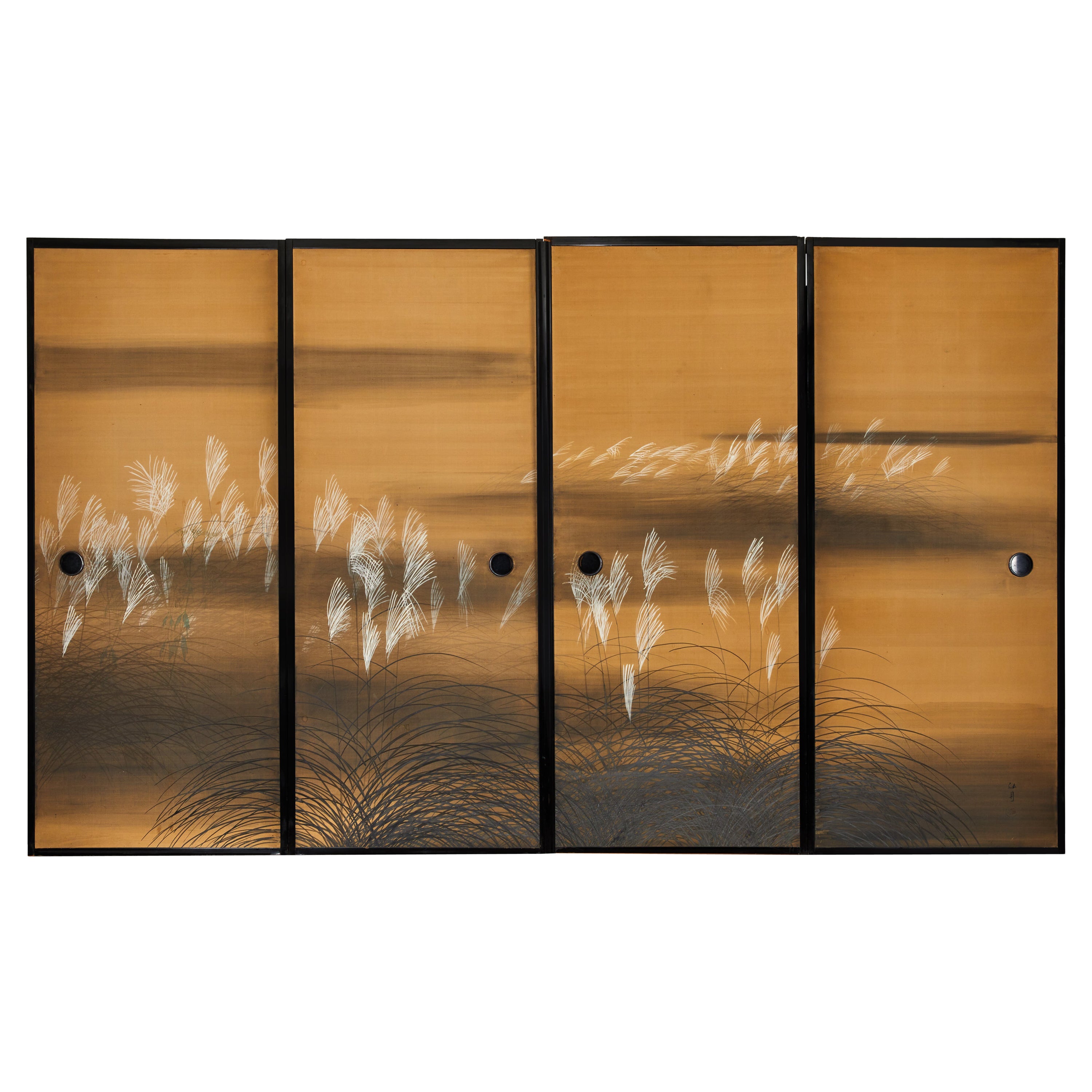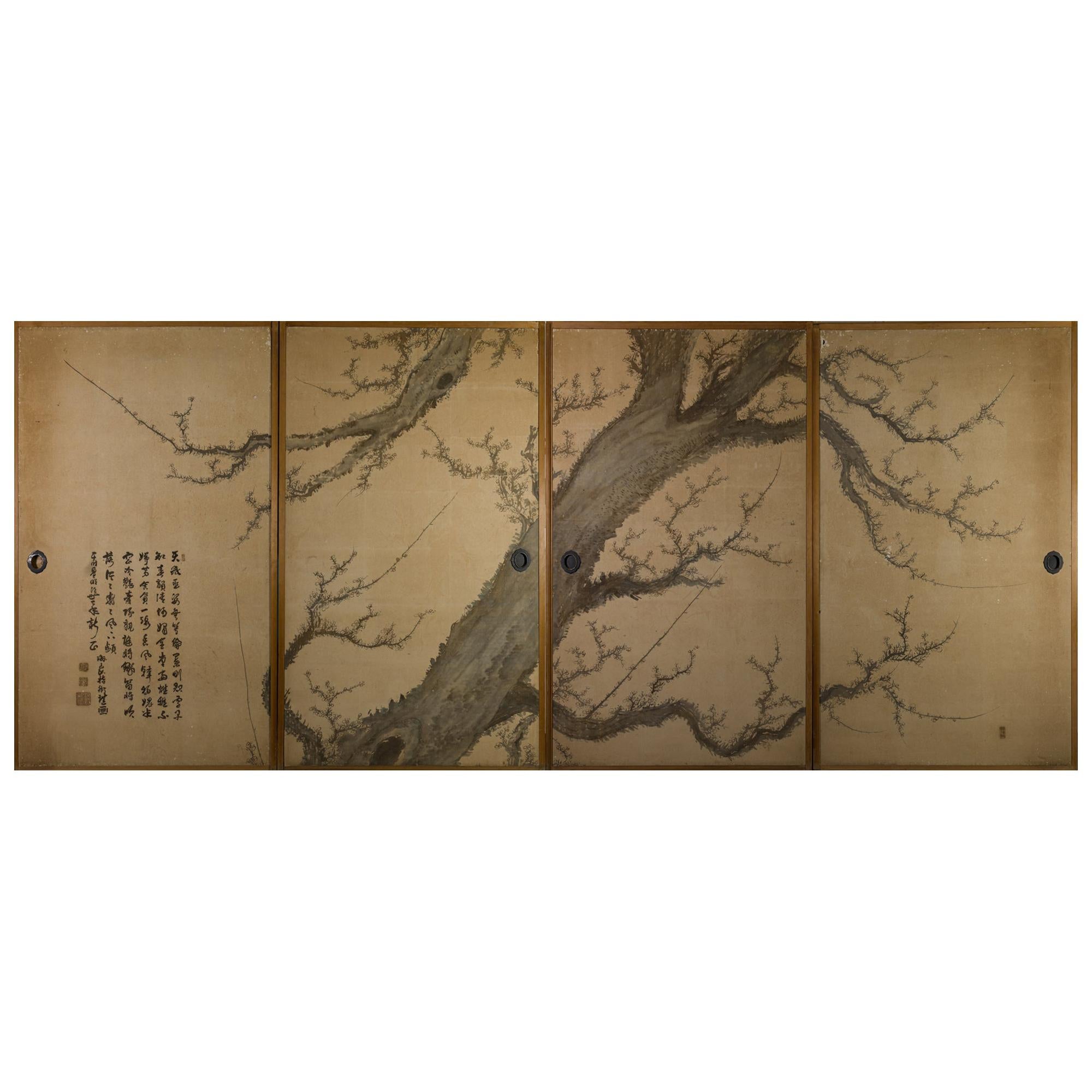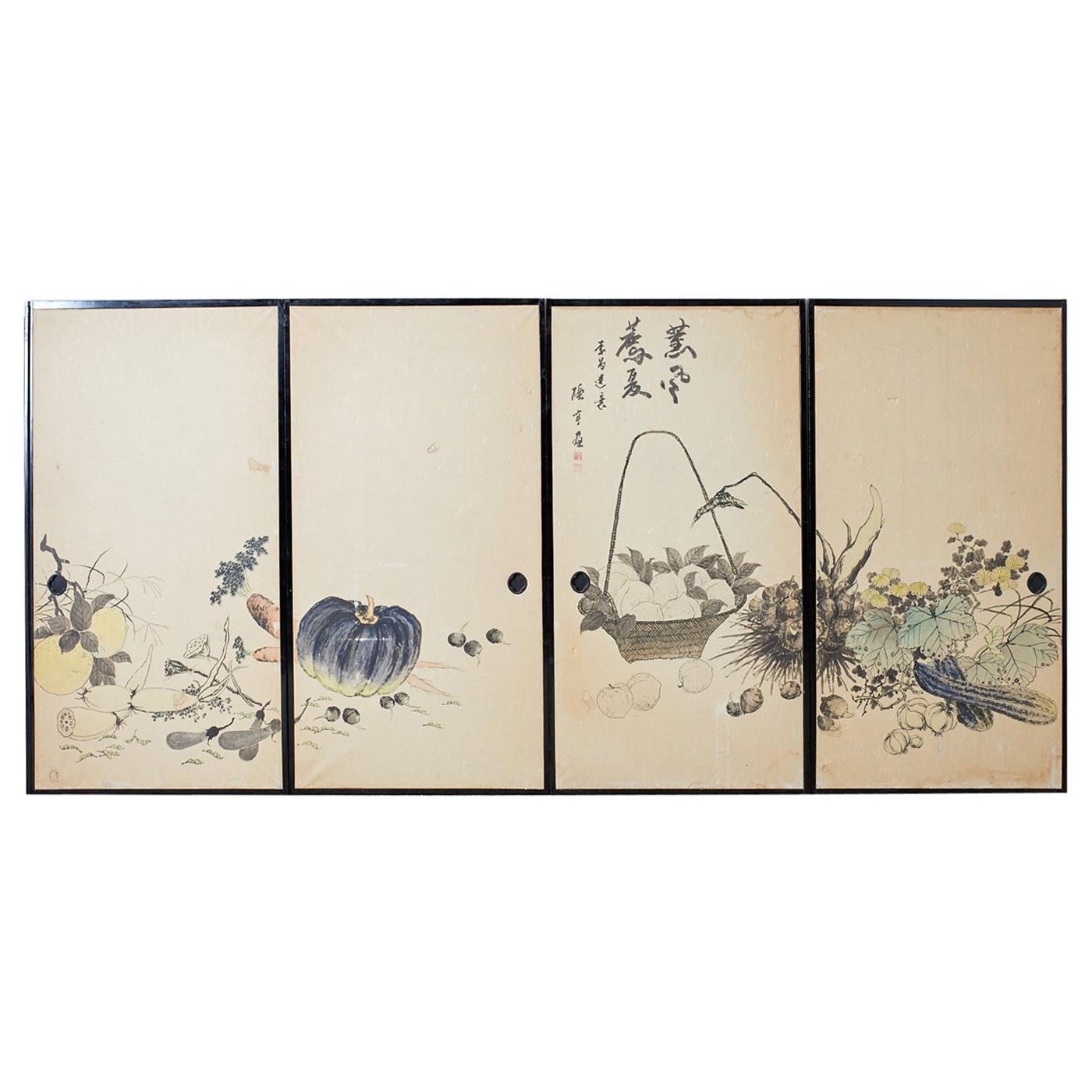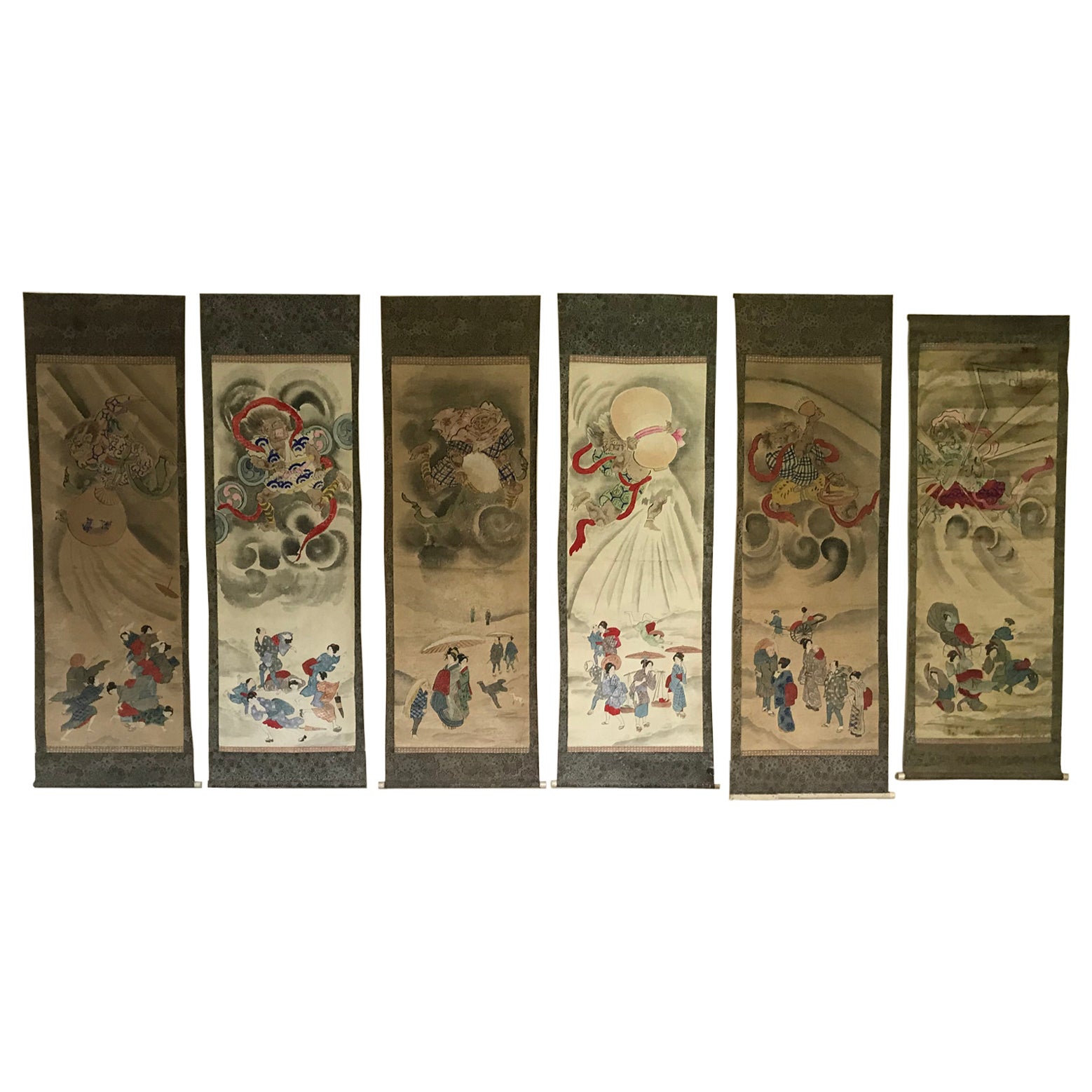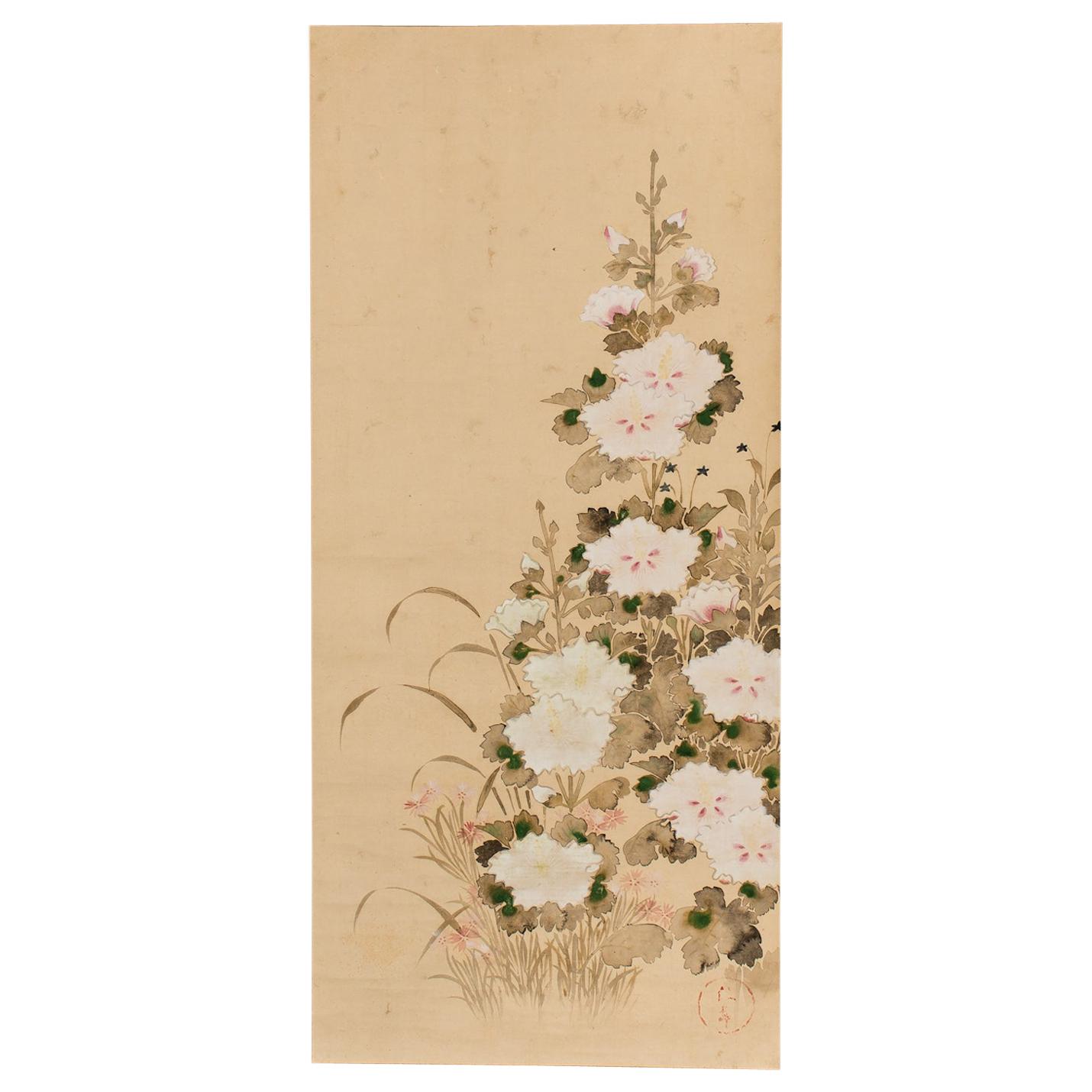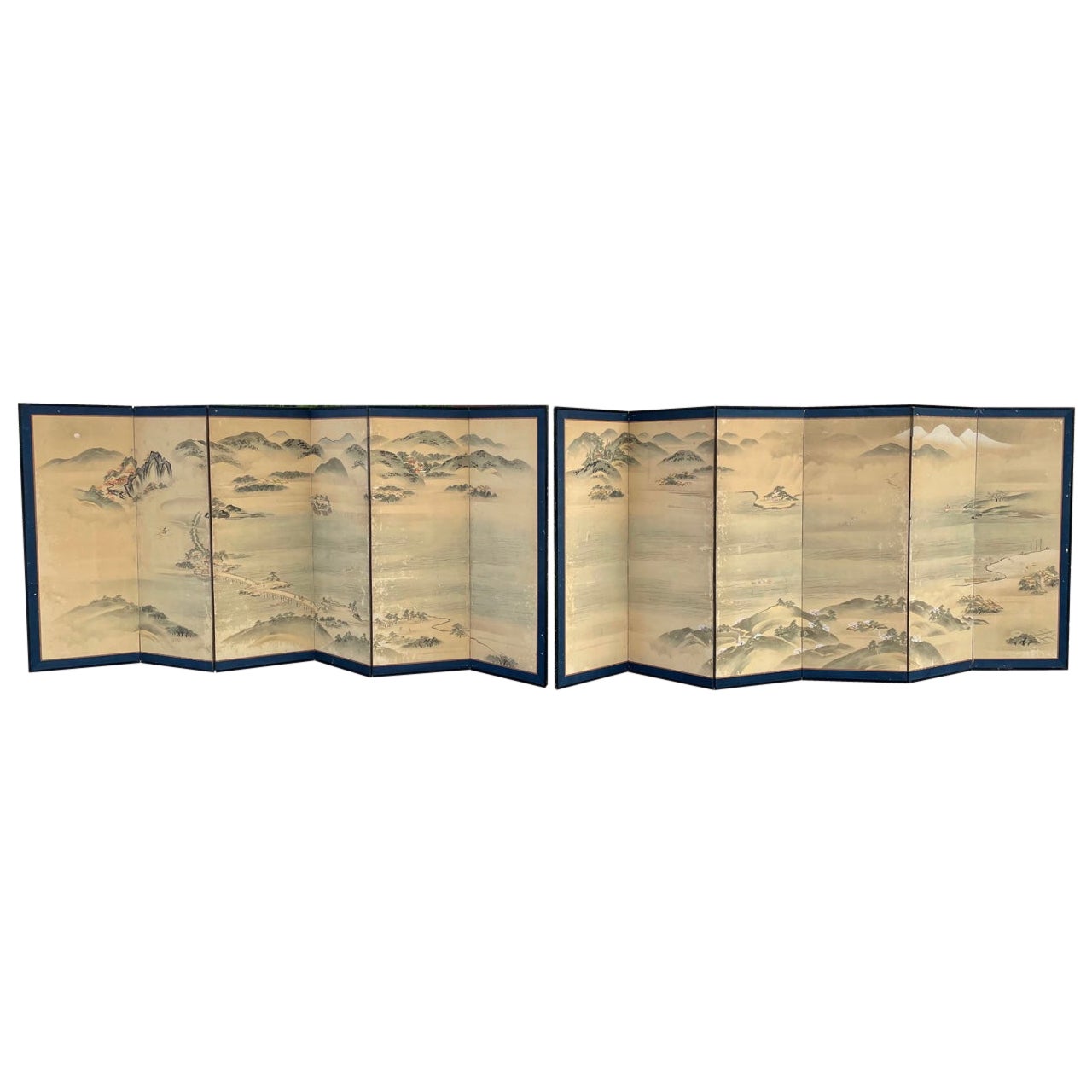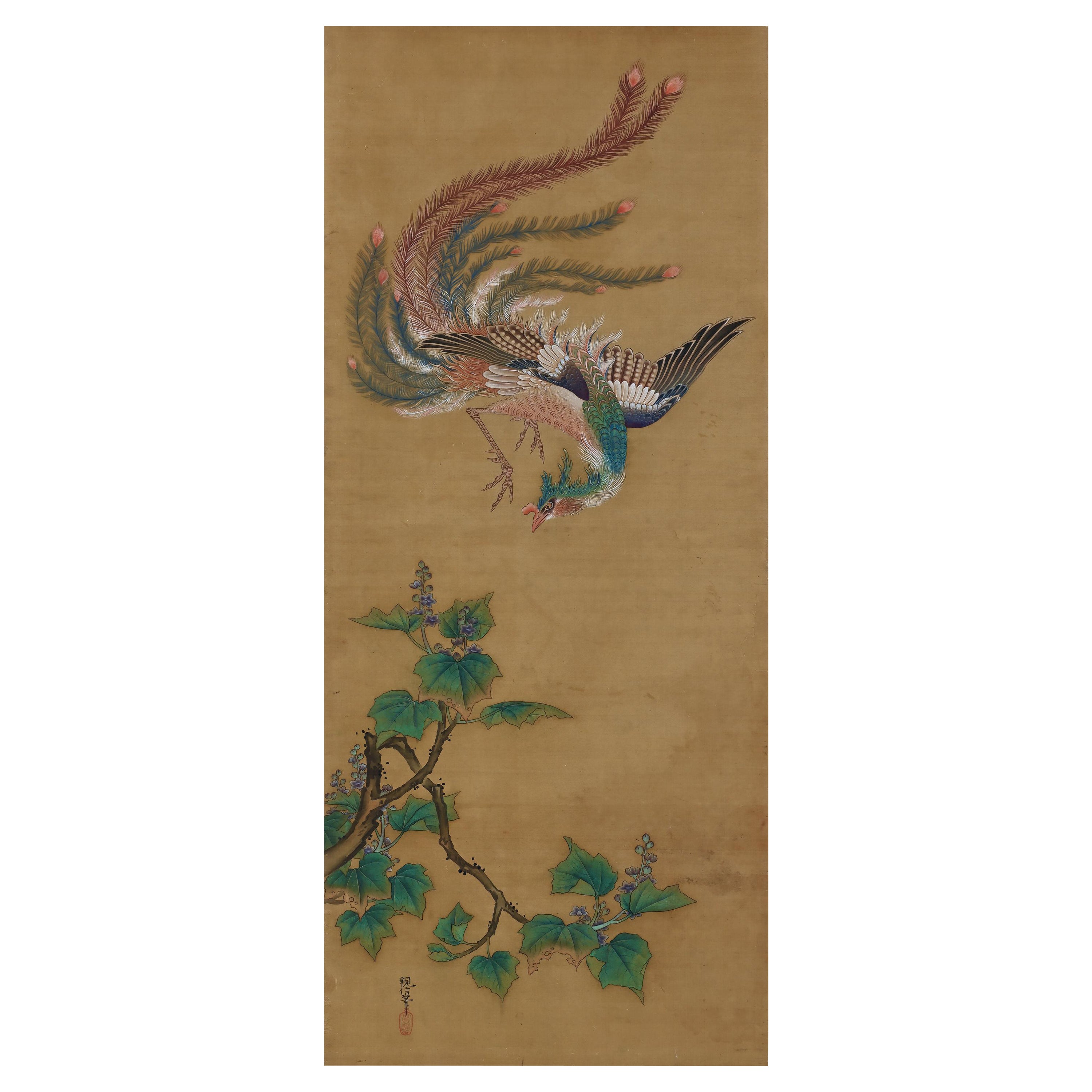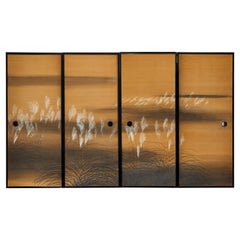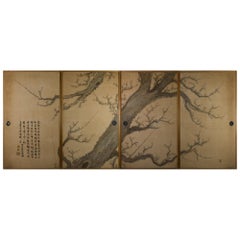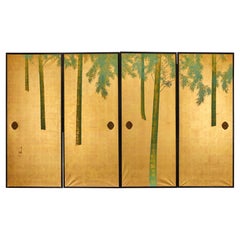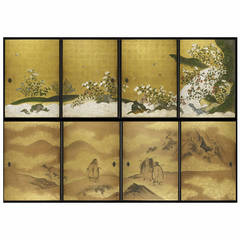
Complete Set of 19th Century "Fusuma" Japanese Sliding Doors
View Similar Items
1 of 10
Complete Set of 19th Century "Fusuma" Japanese Sliding Doors
About the Item
- Dimensions:Height: 68 in (172.72 cm)Width: 192 in (487.68 cm)Depth: 0.78 in (1.99 cm)
- Sold As:Set of 4
- Style:Edo (Of the Period)
- Materials and Techniques:
- Place of Origin:
- Period:
- Date of Manufacture:19th Century
- Condition:Wear consistent with age and use. Minor structural damages. Service restoration.
- Seller Location:Paris, FR
- Reference Number:Seller: st 823631stDibs: LU107242736482
You May Also Like
- Set of Four Sliding Doors (Fusuma): Wild GrassesLocated in Hudson, NYMeiji period (1868 - 1912) four separate sliding doors (fusuma) with Shijo School paintings of wild grasses. Can be hung separately, or together as shown. Signature reads: Kogetsu....Category
20th Century Japanese Paintings and Screens
MaterialsBronze
- Japanese Four-Panel Screen Four Fusuma 'Sliding Doors' with Venerable PlumLocated in Hudson, NYJapanese four-panel screen: Four Fusuma (Sliding doors) with venerable plum. Four individual fusuma (sliding doors), which can be hung together or separately. Signature and seal on f...Category
Antique Early 1800s Japanese Edo Paintings and Screens
MaterialsBronze
- Set of Four Sliding Doors (Fusuma): Bamboo on GoldLocated in Hudson, NYMeiji period (1868 - 1912) four separate fusuma doors (sliding doors) with paintings of bamboo trees. Can be hung separately, or together as shown. Signature in the process of bein...Category
Antique Late 19th Century Japanese Paintings and Screens
MaterialsGold, Bronze, Gold Leaf
- Set of Four Japanese Fusuma Painted Door PanelsLocated in Rio Vista, CARare set of four Japanese Showa period door panels known as Fusuma in Japanese architecture. Similar to a Shoji room divider but made of an opaque materia...Category
20th Century Japanese Showa Paintings and Screens
MaterialsBrass
$3,000 / set - Set of 6 Large Kakemonos Japanese Mythology, 19th Century Japan circa 1800 EdoLocated in Beuzevillette, FRBeautiful set of 6 large kakemonos from 19th century Japanese mythology. Paper support with a canvas pasted on the paper Wonderful set that is part of Japan's history and beliefs When not hung, the Kakemonos are rolled up. circa 1800 - Japan - Edo Period A kakemono translates as "object to hang". In Japan this refers to a painting or calligraphy, most often done on silk or paper framed in a scroll that was intended to be hung on walls or in public lighting. This particular form, which allows them to be in a roll, dates back to the Tang dynasty in China (this would be related to the copying and preservation of ancient Buddhist texts). A Kami is a deity or spirit worshipped in the Shinto religion. A Yokai is a spirit, ghost, demon, or strange apparition from the creatures of Japanese folklore. Each of these kakemonos represents a unique story: - A kami, a Japanese deity, is shown painting a rainbow. Indeed, he performs the action with his right hand while his left hand holds a kind of basket with three pots of paint. This kami has a rather closed attitude. He is standing in a dark and tormented sky. Below this figure, 8 villagers are dressed in traditional Japanese clothes. Their faces are softened. They are not afraid of the elements made by the kami above their heads. - A character with an unreal look is holding a kind of jar with his two hands, which he spills on human figures above. This being is floating in the air, probably a character from mythology, perhaps Susanoo. Underneath, villagers on umbrellas. They are trying to protect themselves as best they can from what is falling on them. One of them is carrying baskets with fish on her shoulders. A character in the background is thrown forward and falls. - On this kakemono, the god Raijin, dressed in a white and blue outfit, strikes the sky with his two drum hammers to create lightning and its thunderous sound. Surrounded by Tomoe and a long red scarf, Raijin, enraged and with dishevelled hair, creates a dark and violent storm. The villagers seem frightened by this meteorological phenomenon. One of the villagers can be seen fainting in the arms of a man. This scene may seem chaotic, but Japanese legend tells us that once a field is struck by lightning, the harvest is good. - On this kakemono, we see an unreal-looking figure holding a fan, as if he were sweeping away the bad weather, or simply producing gusts of wind. He is probably the kami of wind and air, Shina tsu-hiko. The figures below him seem surprised by so much wind. An umbrella flies away on the left, the women hold their hair and scarf, the clothes are caught in the power of the wind, there is even a woman on the ground on the bottom left. - This Kakemono represents a short moment. This Raiju is a yokai (ghost spirit...Category
Antique 19th Century Japanese Edo Paintings
MaterialsPaper
- 19th Century Japanese Scroll of HollyhocksLocated in Hudson, NYSeal on lower right reads: I'nen. Beautiful and delicate Rimpa painting using tarashikomi (painting-in) technique of wet on wet painting. Painted in a style reminiscent of the famous...Category
Antique 19th Century Japanese Paintings and Screens
MaterialsSilk, Wood, Paper
Recently Viewed
View AllMore Ways To Browse
Antique Asian Art Framed
20th Century Chinese Screen
Antique Asian Wall Art
Silk Painting Japan
Bird And Flower Panels
Silk Screen Paintings
Japanese Painted Silk Art
Chinese Folding
Asian Silk Screens And Paintings
Pines Japanese
Japanese Painting On Wood Panel
Asian Framed Gold
19th Century Chinese Screen
Japanese Screen Mid Century
Black Lacquer Screen
Japanese Wood Painted Panels
Japanese Painted Wood Panel
Panel Screens In Gold
